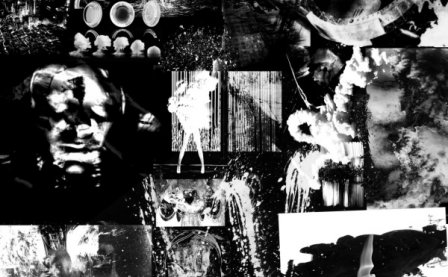According to French economist Jacques Attali, noise is a manifestation of violence. That is, he writes, because “it disturbs. To make noise is to interrupt a transmission, to disconnect, to kill.” Noise, however, is a term enveloped in multiple interpretations and increasingly a subject of discussion, both within circles of active participators and outside them. Two definitions of the term prevail: the first, as Paul Hegarty recognizes, by way of “a negative reaction, and then, a negative response to a sound or set of sounds;” the second, as a genre-term, used by many to group a particular expanse of music, prototypically exemplified, coincidentally, by much of Dilloway’s work so far.
Whereas the first definition of noise attempts to situate it in opposition to music, the second regards the two as homogeneous. Albeit, while the common contemporary understanding of ‘noise music’ is arguably nothing more than an appropriation of the term ‘noise’ to define a particular strain of music in a way no different from the norm, the emergence of noise as a musical genre in and of itself may also be a sign of underlying aesthetic circumstances that suggest a dissolution of the noise/music dualism, pointing away from the oppositional politics of noise vs. music and toward a situation in which meaning can be located simply in the rejuvenation of sound.
It is on this wise, I believe, that Aaron Dilloway’s latest release can be appreciated. Indeed, what’s striking about Modern Jester is both its inconsistency and its inclination to continually renew itself. From the offset, the wavering drone of “Tremors” creates a disquieting sense of instability, that everything would collapse if it weren’t for the echoes that tape the piece together. Without conclusion though, the album abruptly cuts to “Eight Cut Scars (For Robert Turman),” which, conversely, is a steadfast proclamation of endurance: an 11-minute-long onslaught with the semblance of a choked recording of some math rock band, distorted well past the point of discernibility. “Body Chaos” is similarly disruptive, bringing with it a heightened spatial dimension and augmenting the palette with the palpable sound of field recordings.
Modern Jester was three years in the making (here a video can be seen of the inventive production of “Tremors” in 2010), and the perseverance is audible in the final result. The double LP is released through Dilloway’s own Hanson Records, which, in its 18 years of operation, has provided an outlet for noise makers like Kevin Drumm, Hair Police, and Dilloway’s previous band Wolf Eyes. It is, admittedly, a comprehensive representation of his course thus far, but the amalgamation of Dilloway’s diverse temperament presents something untried and, for want of a better way to put it, pretty fucking violent. Through artful tape loop experiments, Aaron Dilloway plays the modern jester: a modern-day enactment of the historic entertaining fool, who (according to the Royal Shakespeare Company) “served not simply to amuse but to criticize;” by way of a confounding disposition, he violates what has come to be expected, ironically, of noise.
More about: Aaron Dilloway




